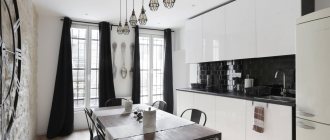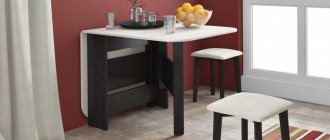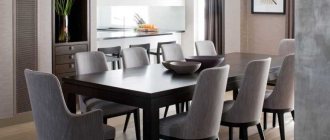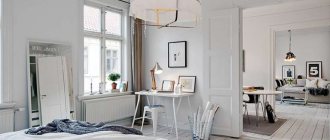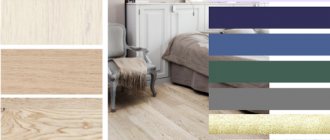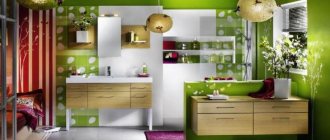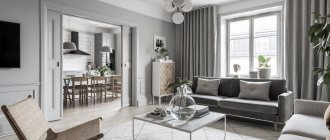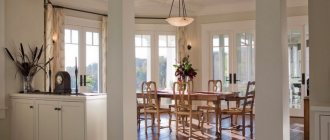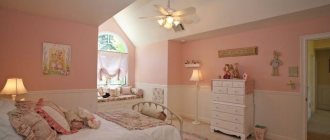31.03.2021
542 views,
White walls are versatile, so they can be a suitable backdrop for spaces that reflect the character and interests of their owners. Regardless of the interior style, white works well if you choose the right shade and combination with furnishings. Most museums have walls painted this color for a reason. Works of art look great against their background. And all attention is focused on them, and not on the paint underneath them. Therefore, in recent years, the white gallery background has migrated from exhibition halls to living spaces. Spectacular photographs of rooms with white walls flash across social media feeds every day. But there are no fewer opponents of this design decision than fans. Moreover, what some consider advantages, others call disadvantages. So, is white boring or clean? Facelessness or the basis for creating a light, spacious and unique home?
Disadvantages
A photo of a white wall certainly looks advantageous, but this decoration has its negative aspects.
White color is initially impractical and requires constant care. Read: Decorating walls in the bathroom: a review of the best finishing materials. Wall tiles, wall painting, plastic PVC panels, finishing with decorative plaster, wallpaper
A purely white room is subconsciously compared to a hospital, so white should always be diluted - by playing with contrast or combining it with calm tones.
Shades of white
White color has several incarnations. Snow-white with blue and green tints is more suitable for rooms with windows facing south. Smoky white looks cool as it has a gray undertone, but at the same time gives the interior a cozy and calm feeling. Unfortunately, in dark, north-facing rooms, smoke appears off-white, so its use in poorly lit rooms is not advisable. Cold shades also include snowy (perfect white), which adds brightness to the room.
The photo shows a small bedroom with white walls that visually expand the space.
Warm tones include white walls with yellow and pearlescent shades: the color of “natural linen”, creamy, “sea shell”, “honeydew”. The cream (milky) shade of the walls is especially popular. The temperature of the ivory color depends on the lighting, but its nobility remains unchanged.
Warm tones are best suited to classic and rustic interiors, while cool tones are best suited to modern, industrial and minimalist interiors.
The photo shows a living room-library in warm cream tones.
Best combinations
White wall color is universal, so it looks harmonious with most shades. Serious and uncompromising natures will like the monochrome furnishings - a contrasting combination of black and snow-white. This is a traditional option, giving an atmosphere of rigor and respectability, even if little money was spent on renovations.
Nature lovers will appreciate the combination of pearl, green and wood. This solution is relevant for Scandinavian and eco-style: light walls bring furniture and decor made from natural materials to the fore.
The milky color also makes an excellent background for bright details: yellow accessories make the atmosphere joyful and sunny, while red ones emphasize the courage and originality of the apartment owner.
The photo shows a living room with white walls and a black accent area in the TV niche.
The white color of the walls in the interior looks great in combination with calm beige and luxurious gold, giving the living room or bedroom sophistication.
Cool blues, aqua and mint tones are suitable for nautical-style rooms, as well as modern interiors that want to add freshness and airiness.
The combination of white and gray is considered a winning one: this option never goes out of fashion, and it is also easy to dilute with splashes of color.
The photo shows a living room with white walls, which recedes into the background, highlighting the original furniture and a magnificent fireplace.
White walls in a Scandinavian interior
Many experienced designers have noted in recent years a trend of increased interest in Scandinavian interior design for a home or apartment. The principles of this style are based on simple and understandable solutions:
- predominance of light colors, predominantly white;
- maximum illumination;
- natural accents (particularly wood) and natural materials.
Scandinavian interior suggests an abundance of light and white (semi-white) tones in combination with natural materials. Snow-white walls will create lightness and weightlessness in the interior of the rooms. They can be decorated with all kinds of paintings, posts, photographs in photo frames hanging on the wall or unusual decorative items in the form of skins, theater masks, etc.
The presence of good light is achieved through proper window decoration. White walls harmonize perfectly with the whitewashed floor and light frames on the windows. As a rule, the Scandinavian interior is characterized by a complete absence of textiles on the windows or its presence in a minimal amount. For this, light, light curtains that let in the maximum amount of light or always assembled Roman blinds, which are used only for decorating windows, are suitable. This interior uses numerous lamps of laconic, restrained shapes. As well as contrasting colors in other items for additional lighting: floor lamps, sconces and sometimes candles.
The use of wood in combination with light white tones brings us closer to nature, creates unique comfort and warmth in the overall atmosphere of the house. This could be wooden furniture with raw details, for example, rough uncouth bookshelves or cabinets, a wood coffee table. It would be appropriate to lay parquet boards or laminate on the floor. Also, wickerwork will fit well into this interior: from small items (baskets and vases) to large-sized furniture (chairs, tables).
Related article: Marine-style curtains - all the nuances and subtleties of this type
When creating a Scandinavian interior in your apartment, remember one simple thing - the main thing is not to overdo it with wood, just like in any other interior with other contrasting elements. Because this interior style involves an abundance of white, diluted with natural decor, and not vice versa.
What curtains are suitable?
Another irrefutable advantage of white walls in the interior is their versatility. You can change textiles - curtains, bedspreads, pillows - and the room will be transformed without much expense.
When purchasing curtains, consider the three-color rule. Since white is the main color of the room, you need to choose curtains either as an additional shade (it takes up 30% of the room) or as an accent (10%).
The design of curtains depends on the chosen direction: multi-tiered curtains will fit into a classic style, and laconic curtains will fit into any modern one. As for patterns: they are appropriate if the environment is not active, that is, white wallpaper or furniture upholstery should not contain ornaments. A successful pair is the same curtains and pillows.
In the photo there are soft beige curtains that soften the bright whiteness of the living room.
An excellent option is dark, plain curtains in rich colors that will make the interior lively and modern.
If you hang curtains that are identical in color to the walls, this will add light and sophistication, but there is a risk of creating a dull interior. This solution looks impressive if the rest of the room is designed in white tones.
The photo shows a small bedroom with pure white walls, light textiles and matching furniture.
Finish options
A snow-white interior requires a choice of materials to suit every taste, but how can you make white walls in an apartment or house yourself?
The most budget-friendly and popular solution is emulsion paint. It is easy to care for and can be applied easily in one or two layers. The texture can be glossy (has a cool shine, but is easier to clean) or matte (better hides wall imperfections). If the surface gets dirty, you can simply repaint it. The only drawback is that the walls must be smooth and perfectly prepared.
Another design method is decorative plaster. It makes the interior more diverse, but the textured surface is more difficult to care for. In addition, during the next repair the coating will have to be cleaned down to the base.
Ceramic tiles are traditionally chosen for the bathroom. The gloss reflects light, so it is an ideal choice for small bathrooms. The tiles are environmentally friendly, durable and absolutely not afraid of moisture (which cannot be said about seams). It is also suitable for kitchen aprons, protecting walls from dirt.
The photo shows painted white walls that extend into the white ceiling of the attic. The kitchen backsplash is finished with boar tiles with dark grout.
A relatively inexpensive finishing method is paintable wallpaper (non-woven, vinyl, paper). They hide the imperfections of uneven walls well. But they need to be glued end to end so that the surface looks perfect.
Brickwork also never goes out of style. It is appropriate not only in the loft style, but also in Provence, fusion and Scandi. There are several ways to create a white brick wall:
- paint a natural terracotta wall, having previously cleared it of salts and primed it (then it will be practically impossible to remove the paint);
- forming bricks with plaster, then painting;
- buy gypsum tiles and glue them.
A less popular, but attractive way to decorate walls is wood: lining or panels. Not only country houses are clad in wood, but also apartments when you want to add a touch of country atmosphere to the decor.
What style is better to decorate?
White walls in a house or apartment mean, first of all, versatility. They add nobility to the classic style, combining perfectly with rich textures, luxurious furniture made of expensive wood and stucco on the ceiling.
White walls are the hallmark of a Scandinavian-style apartment. They are supported by homemade decorative elements, budget furniture, cozy textiles and home plants.
White walls in a loft-oriented interior add spaciousness to the room. In such industrial apartments, it is important to leave a light background: deliberately rough contents (furniture and decor) should be balanced with light, unobtrusive finishing.
The photo shows a living room-office in the loft style. The white color of the walls serves as a background for contrasting furniture, and the color of the floor emphasizes the brutality of the decor.
The milky shade invariably remains a favorite for the shabby chic style, which is appreciated by romantic people. Antique furniture, scuffs, fresh flowers and light textiles give a feeling of airiness and at the same time homely living.
In high-tech style, white wall color remains the most popular. With the help of lighting in different colors, a snow-white room can change its appearance depending on the needs of its owner.
White wall color for contrasting solutions
The white walls of an apartment or house can be completely painted/decorated in this color or partially. If the task for a room is to separate part of it zonally or select one wall to place a contrasting accent on it. Then, in this case, white color will be used as a smoothing background, which will not stand out, but rather will emphasize the “zest” of the interior. It would be appropriate to say “white goes with everything.” For example, to contrast one of the walls of the room by decoding it as wood, it would be better to make the remaining walls white or another light color so as not to overload the overall interior. This way you can combine lightness and brutality of the interior.
Related article: Curtains with eyelets in the living room: features and DIY sewing
These style elements are partly borrowed from the very popular Scandinavian-style interior design. For many, this is the optimal combination of colors and textures in creating a cozy home interior.
How does it look in the interior of the rooms?
It is the white walls that help bring together “incompatible” interior items.
The photo shows a living room in a fusion style, where things with history are united by one common background. Wood, terracotta and turquoise details look interesting on it.
Also, the snow-white background emphasizes bright elements, and contrasting details look even more saturated. It adds graphics and rigor to black and brown colors.
The photo shows a living room with a neutral background, which makes the upholstery visually brighter.
The white color of the walls is appropriate both in a spacious apartment and in a small studio, where there is almost no empty space left. It increases light and visually blurs the boundaries between walls and ceiling.
White brick wall in the interior
By emphasizing various details, in many cases white walls act as a background solution. However, a white wall in itself can become a decoration and take a central place in the interior if it is made of decorative brick. Popular for loft style interiors. Currently, the use of stone or brick in the interior decoration of a house or apartment is becoming a very popular trend. Moreover, either a whole wall or a separate part of it, a corner, a column or an entrance opening can be used as a decorated surface. A white brick wall will not only be an original decoration, but also a very practical finishing option, which is especially appropriate for the kitchen. This design method will look great, highlighting a dining area with a table and chairs or a formal area in a hotel room. A significant function of a white wall is to visually enlarge the space, making it more spacious and bright. However, you should be careful with brick trim, even in white. To prevent such a room from becoming gray and dull, you need to take care of the lighting design in advance.
Related article: How to level a wooden floor: without tearing off old boards, opening a plank cabinet, an uneven plane and an electric planer
A wall decorated with white brick can be used in many styles, even classic. You just need to properly arrange and decorate the room. But, white finishing brick will look most advantageous in the interior of modern styles: loft, minimalism, hi-tech.
